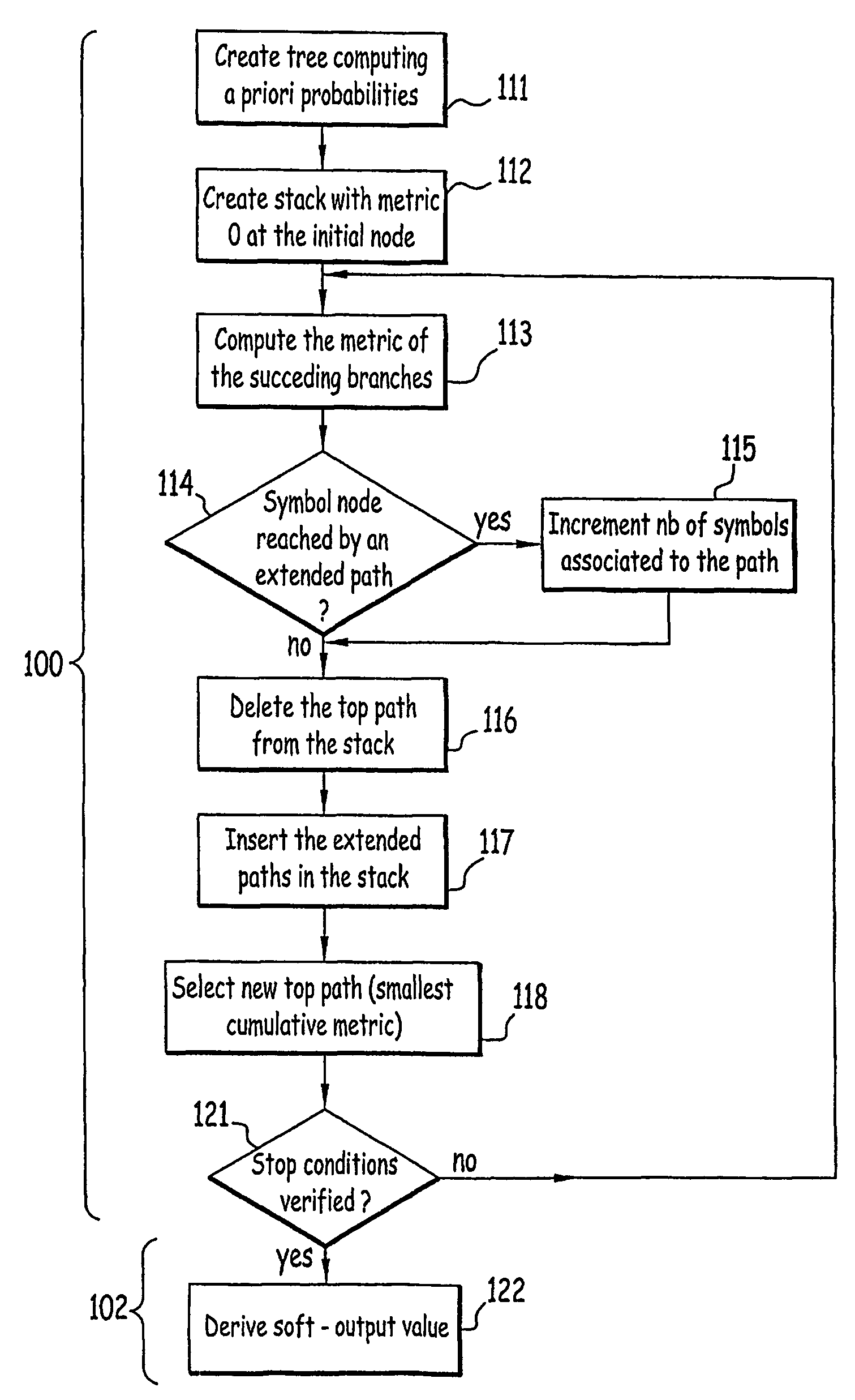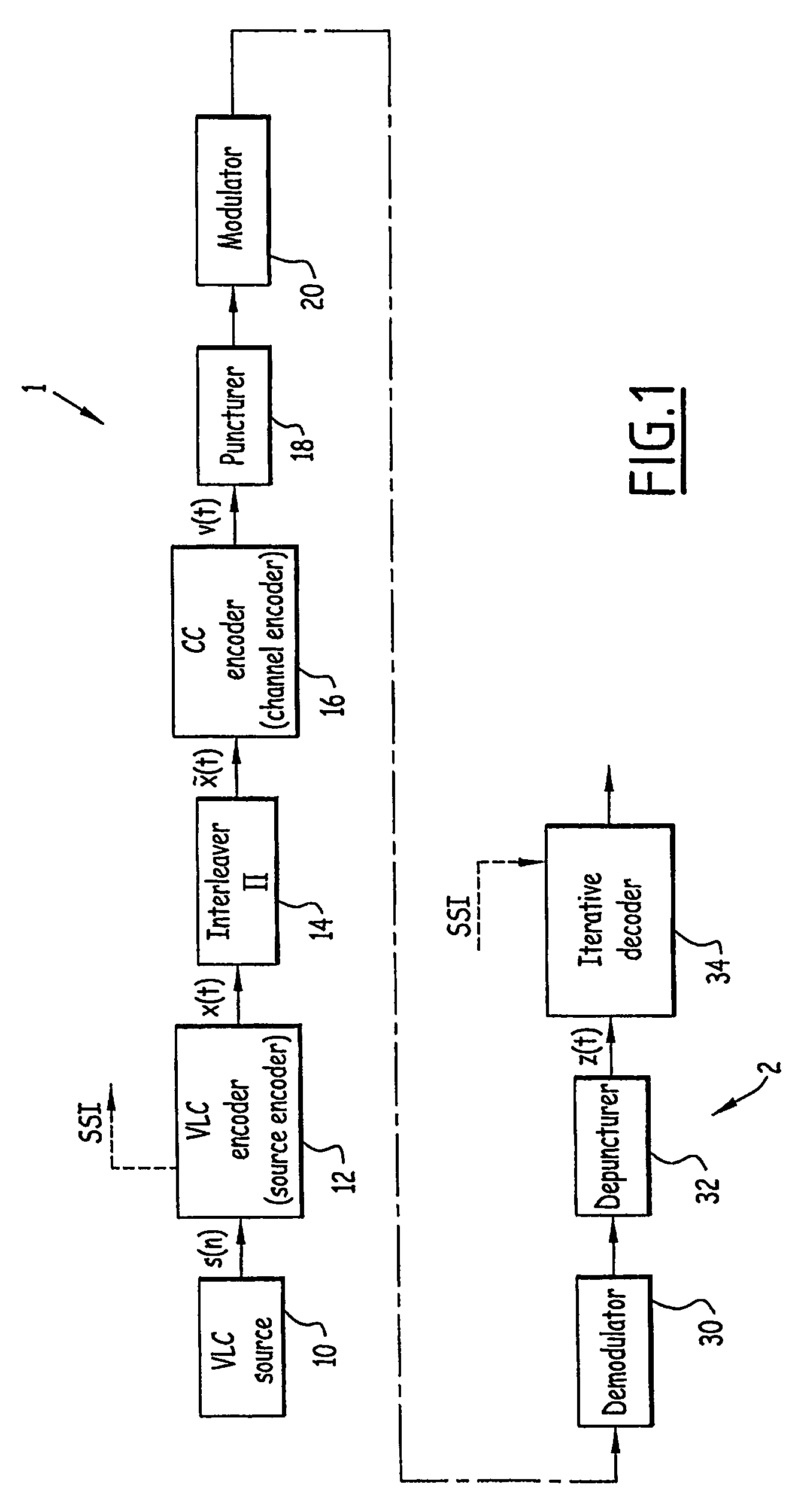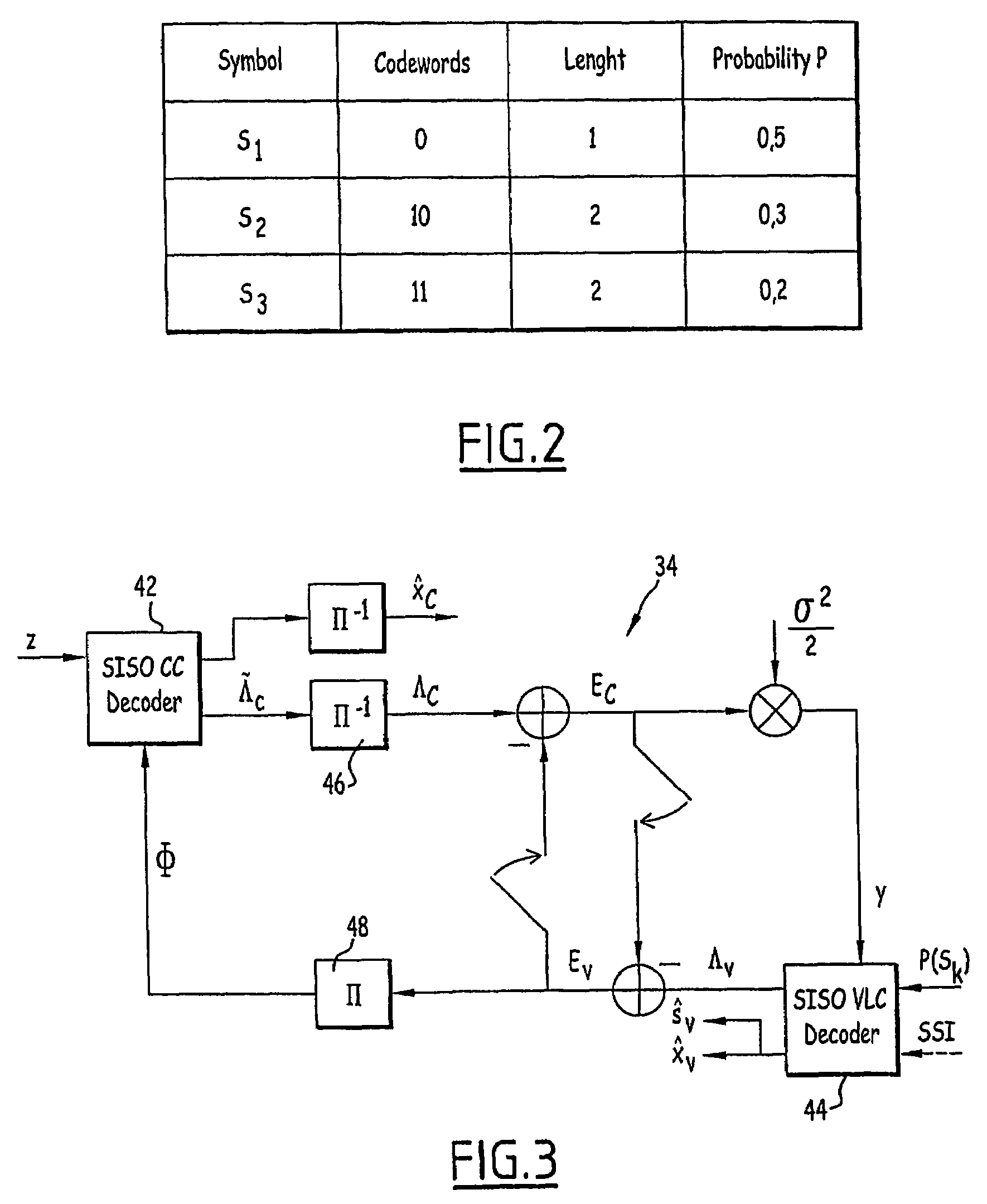Method end device for source decoding a variable-length soft-input codewords sequence
a source and soft-input technology, applied in the field of source decoding a variable-length soft-input codewords sequence, can solve the problems of high channel error rate, dramatic symbol error rate, and inability to provide reliability information on bits, etc., and achieve the effect of reducing complexity, time and cos
- Summary
- Abstract
- Description
- Claims
- Application Information
AI Technical Summary
Benefits of technology
Problems solved by technology
Method used
Image
Examples
Embodiment Construction
[0021]A transmission chain for joint decoding between convolutional code and variable-length code is shown on FIG. 1.
[0022]This transmission chain comprises a transmitter 1 and a receiver 2.
[0023]Variable-lengths codes (VLC) are used in the transmission chain to reduce the length of the transmitted bitstreams.
[0024]The transmitter 1 includes a variable length source 10 which is adapted to output a random VLC symbols sequence s according to chosen VLC codewords probabilities.
[0025]At the output of the VLC source, the transmitter 1 comprises a variable length encoder 12, a pseudo-random interleaver 14, a systematic convolution (CC) encoder 16, a puncturer 18 and a BPSK modulator 20.
[0026]The random VLC symbols sequence s is encoded in the VLC encoder 12 which is a adapted to map the received symbols, for example grouped into packets of R symbols, to a T-bit VLC sequence denoted x [1:T]. The bit sequence x [1:T] is created, as known per se, following the rule edicted by a VLC table. An...
PUM
 Login to View More
Login to View More Abstract
Description
Claims
Application Information
 Login to View More
Login to View More - R&D
- Intellectual Property
- Life Sciences
- Materials
- Tech Scout
- Unparalleled Data Quality
- Higher Quality Content
- 60% Fewer Hallucinations
Browse by: Latest US Patents, China's latest patents, Technical Efficacy Thesaurus, Application Domain, Technology Topic, Popular Technical Reports.
© 2025 PatSnap. All rights reserved.Legal|Privacy policy|Modern Slavery Act Transparency Statement|Sitemap|About US| Contact US: help@patsnap.com



